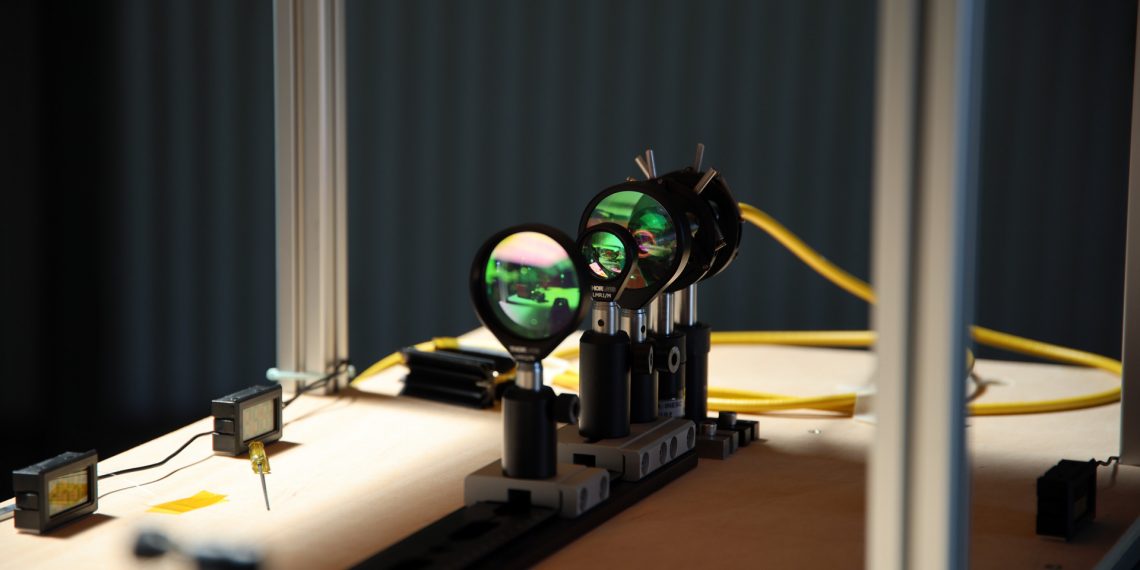Creating an innovative wireless energy transfer system to recharge the energy storage components used in CubeSat technologies – this was the main objective of the European project WipTherm, with INESC TEC’s participation.
WipTherm was a European project dedicated to the development of pioneering solutions for wireless energy transfer in the field of microsatellite power for space exploration. INESC TEC, one of the five partners of the project, focused on developing a high-power optic fibre laser.
The project came to an end in June, with a demonstration at the São Jacinto air base (Aveiro). Orlando Frazão, researcher at INESC TEC Centre for Applied Photonics (CAP), made “a very positive assessment” of the project’s results. “We were able to increase our knowledge of high-power lasers and develop new optic fibre lasers with several potential applications”.
Lasers like the one developed by INESC TEC are particularly important in space exploration. Fibre optic communication, in which light is used to carry the signal – rather than electric current – is an extremely noteworthy option in scenarios like space communications.
“Our role in the consortium focused on developing a high-power laser entirely in optical fibre, operating in a 1550-nanometre range, with a maximum power of 40 Watts. In addition, we designed a telescope capable of simultaneously illuminating 27 thermoelectric sensors using an array of lenses”.
During the final demonstration of WipTherm, at the São Jacinto airbase, the researchers were able to achieve power outputs of 20 Watts to power the thermoelectric sensors. Future developments may include converting these lasers into pulsed lasers to obtain powers close to kW”, added Orlando Frazão.
Lasers to power satellites
“Power” is one of the keywords of the project coordinated by the University of Porto. WipTherm’s main goal was to create an innovative wireless energy transfer system to recharge the energy storage components used in CubeSat technologies (e.g., micro and nano satellites).
And that’s crucial. With advances in CubeSat technologies, energy demand in this market segment has also increased, requiring larger solar panels, efficient energy storage systems and other energy transfer and collection systems.
During the demonstration, the team used a high-power laser to recharge a CubeSat. This very small satellite, equipped with thermoelectric sensors developed by the Institute of Physics for Advanced Materials, Nanotechnology and Photonics (IFIMUP), was able to absorb light at 1500 nanometres, thus increasing the charging efficiency.
According to Orlando Frazão, “it’s still early” to understand the potential impact of the work developed within the scope of the project on the future of the industry. However, learning with WipTherm allows researchers to focus on a new European project, “Transition”. “In this new project, we have already included a business model for the idea of recharging using lasers. In addition, INESC TEC, together with the University of Porto and other members of the consortium, has already submitted a European patent application”, concluded Orlando Frazão.
The researcher mentioned in this news piece is associated with UP-FCUP and INESC TEC.










 News, current topics, curiosities and so much more about INESC TEC and its community!
News, current topics, curiosities and so much more about INESC TEC and its community!